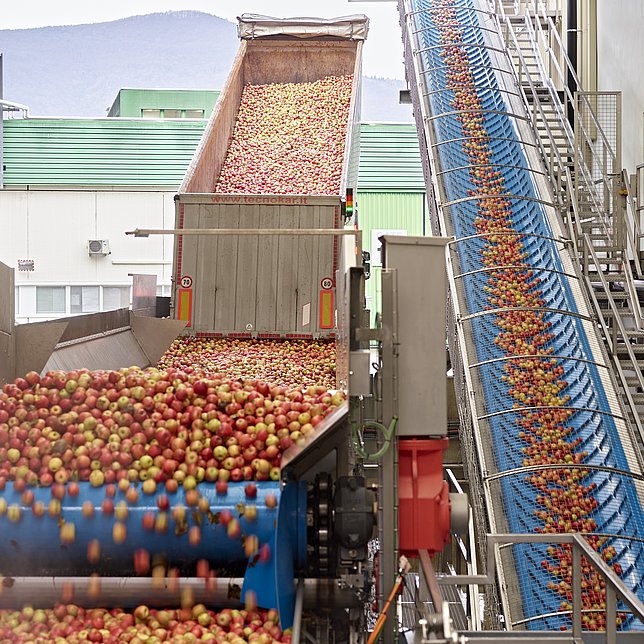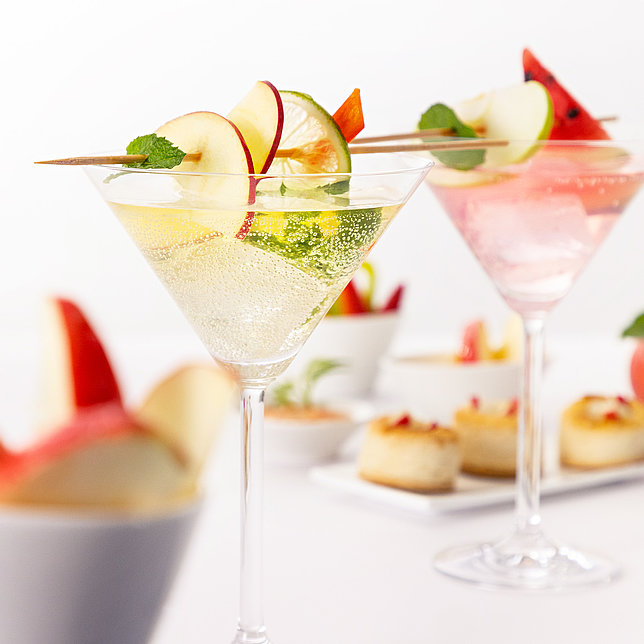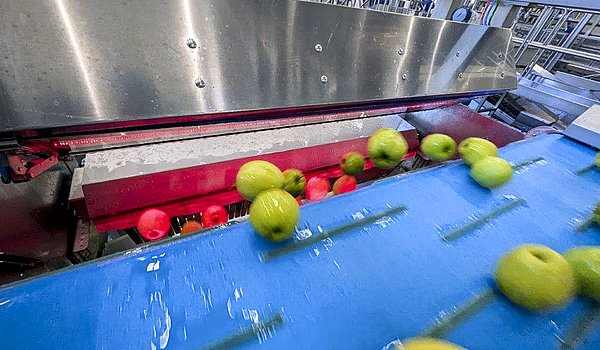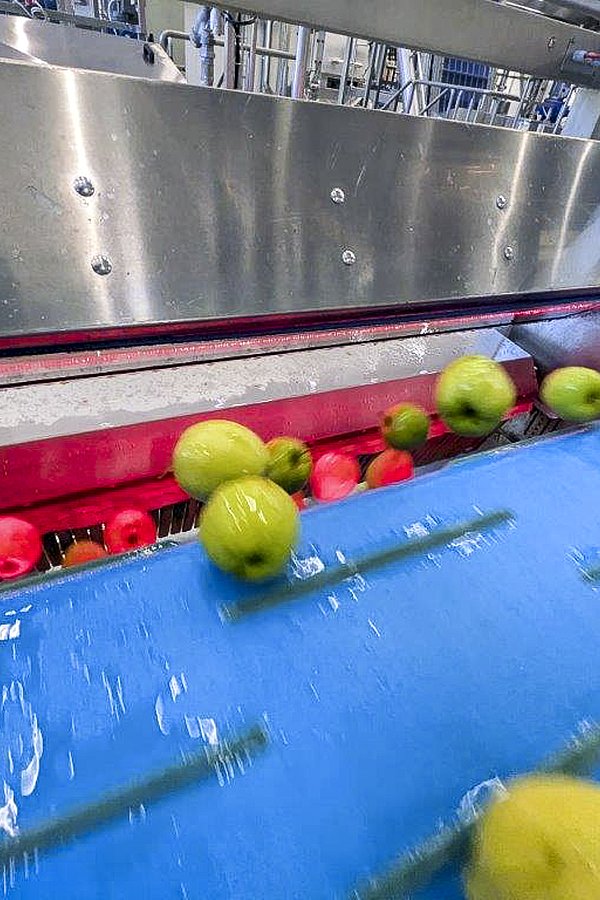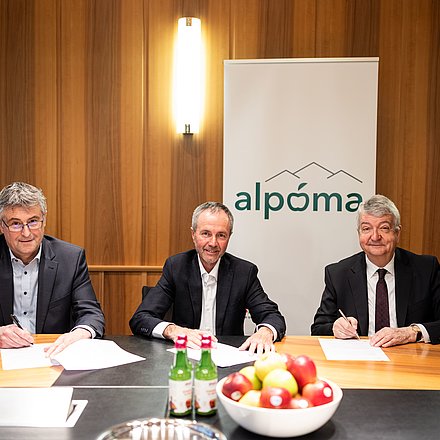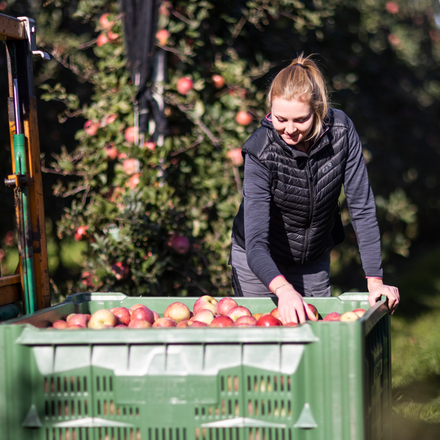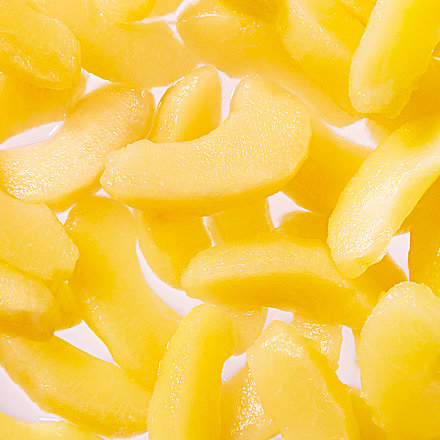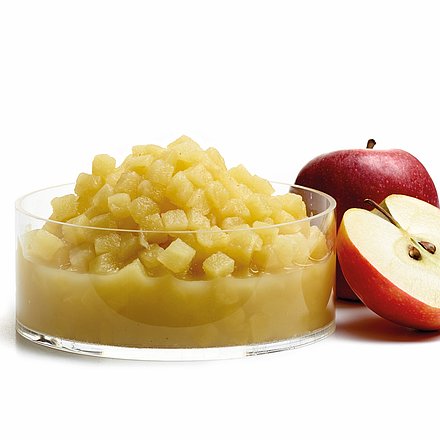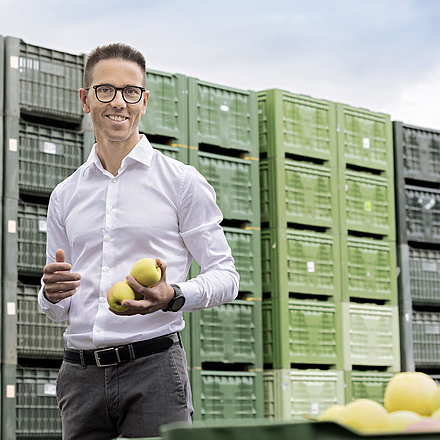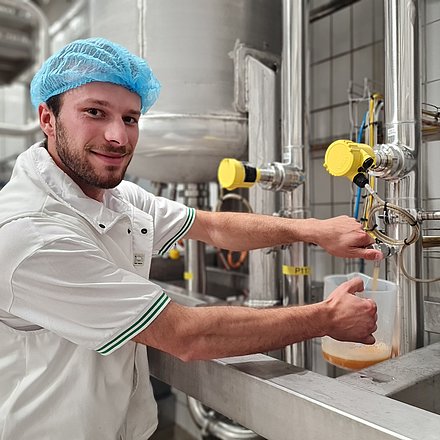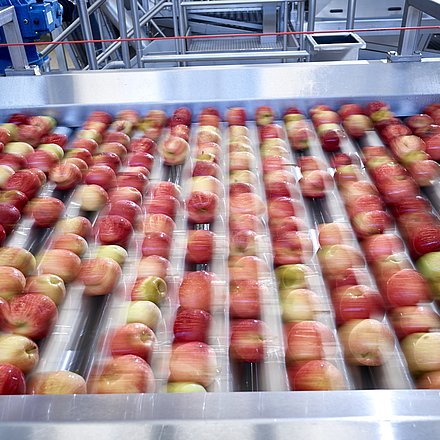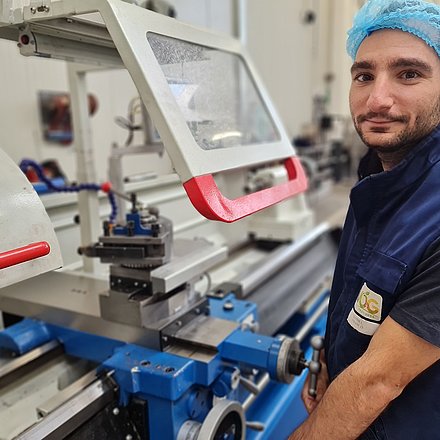Optical Sorting Makes the Difference
What do a laser beam, LED lights, an air jet, and a camera have in common? At VOG Products, they are part of a technology that helps us maintain our quality standards at the highest level. Because when it comes to fruit processing, every detail matters – and this is where the story of our optical sorting begins.
Detecting defects before they become a problem – that’s our approach to intelligent optical sorting machines. Whether in the chunky product segment or in juices and concentrates – we rely on innovation and precision. Our optical sorting machines are the key to consistently high quality. And the best part: they’re constantly learning.
Even the smallest defects can be detected by our optical sorting machines: whether foreign objects, stems, or black spots indicating the onset of rot – what the human eye might miss is reliably identified and sorted out by our systems. Cameras and lasers work in perfect combination to capture the product from all angles and remove defective items, no matter how small. Behind this technology is process developer Simone Frego, who has installed many of these systems over the years and knows them down to the smallest detail. With his experience and dedication, he works together with colleagues from production and engineering to ensure every machine runs optimally – and that new systems are successfully integrated.
• Highest Standards in the Chunky Product Segment
In a fraction of a second, a defective apple cube measuring 1×1 cm is removed from the production process mid-air by a targeted air jet – fast, efficient, and consistent. “This technology enables us to meet the strict quality requirements of our customers: in a box containing 15,000 apple cubes, a maximum of 60 defective pieces are allowed – that’s just 0.4 percent. Thanks to optical sorting, we reliably meet these standards at all times,” says Simone Frego.
• Double Control in the Frozen Segment
On the frozen line, we rely on double optical sorting: after the first sorting pass, a second optical sorting is performed after freezing. The combination of both steps guarantees exceptionally high quality.
• Liquid, but No Less Demanding
Optical sorting also plays a central role in the juice and purée segment. Our machines inspect the raw material immediately after unloading at the purée lines and before storage in the silos for juice production. The optical sorting systems alone inspect up to 30 tons in just 15 minutes. They detect rot in fruits, foreign objects, and other quality defects before processing begins – reliably, objectively, and with consistently high quality.
Currently, Simone Frego is working on a special project he has named “Elisa.” The camera technology, supported by software, is currently in a learning phase, detecting foreign objects on the conveyor belt and capable of stopping the production process on the ASK line if necessary. “Elisa is still like a child learning to walk – but the progress is promising. With every new image capture, the technology improves; the system will be a great help in the future,” says Simone.
Overcoming Challenges – With Technology
“Sorting is becoming increasingly complex,” says Simone Frego. Apples with irregular shapes (wide at the top, narrow at the bottom) or uneven growth (blossom, core, and stem not aligned) pose greater challenges for processing. Such shapes make peeling more difficult and increase error rates. But even here, our systems show their strength – even with “difficult” apples, optical sorting delivers consistently high quality.
“Optical sorting will continue to play an important role in quality control and will be further expanded,” says Simone Frego. He is already working with R&D on complex projects that will change the way we work in the coming years and further improve food safety.


